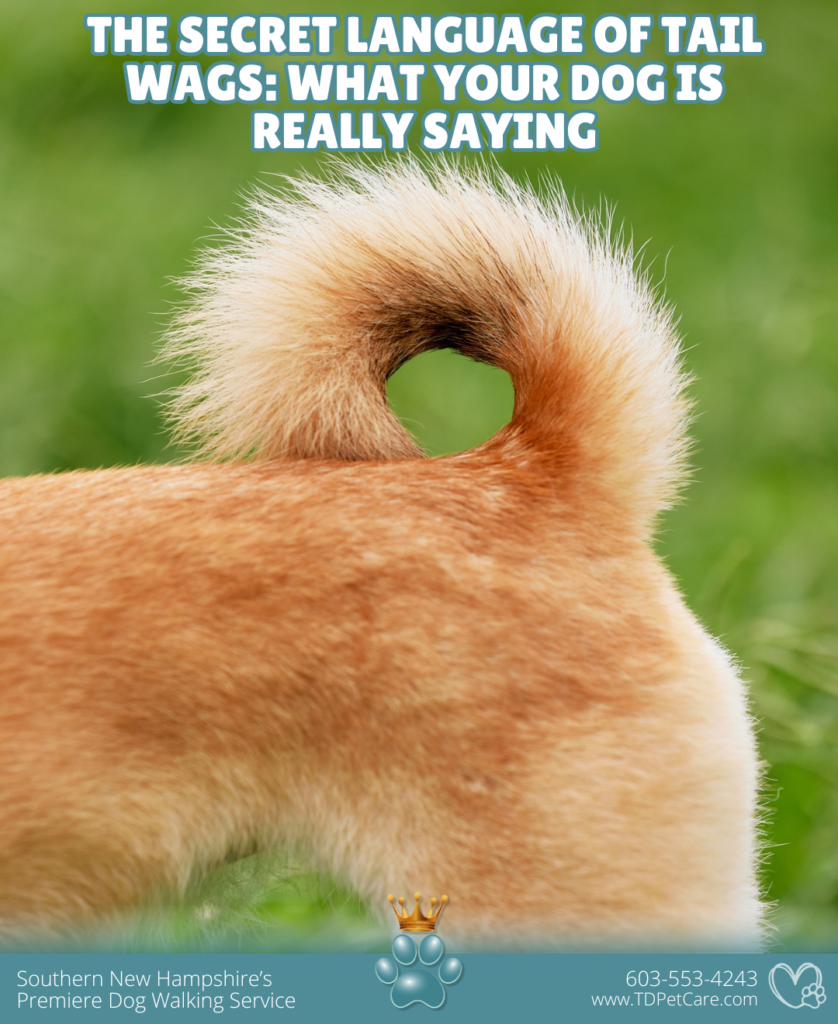If dogs could talk, life would be a lot easier — but let’s face it, they already do! They just use their tails instead of words. Every wag, twitch, and swish carries meaning, and once you know how to read it, you’ll understand your pup better than ever.
At Top Dog Pet Sitting & Dog Walking, we spend plenty of time decoding those wags on our walks — and trust us, they say a lot more than “I’m happy.”

Not All Wags Mean “I’m Happy”
It’s one of the biggest myths in the dog world. A wagging tail doesn’t always mean a happy dog. Instead, it’s a sign of emotion — which could be excitement, curiosity, fear, or even uncertainty.
The trick is to look at the position, speed, and direction of the wag.
Tail Position: What It Tells You
- High Tail: Confidence or alertness. If your dog’s tail is up high and stiff, they might be feeling dominant or on guard.
- Mid-Level Wag: Relaxed and friendly. This is your dog’s “everything’s good” mode.
- Low Tail (or tucked): Fear, stress, or submission. A tucked tail means your dog is feeling nervous or uncomfortable.
Tail Speed: The Emotion Gauge
- Fast, Loose Wag: Excited and happy! Probably the classic “you’re home!” wag.
- Slow Wag: Uncertainty or caution. Your dog may be unsure how to feel about a new situation.
- Stiff, Rapid Wag: High alert or agitation. Time to give your pup some space.
Direction Matters, Too
Believe it or not, research shows dogs wag slightly to the right when feeling positive (like greeting their favorite human), and to the left when anxious or wary. It’s subtle, but once you notice it, you can’t unsee it.
The Whole Body Says Even More
Tails don’t work alone. Pair the wag with body language for the full picture:
- Wiggly body + open mouth = happy dog.
- Tense body + tight mouth = stressed dog.
- Frozen body + stiff tail = back off, I’m uncomfortable.
When we’re out walking pups, we keep an eye on these cues to ensure every dog feels safe, confident, and understood.
Building a Better Bond
The more you learn your dog’s language, the stronger your connection becomes. Understanding tail wags helps prevent miscommunication, reduces anxiety, and deepens trust — both for you and your dog walker.
At Top Dog Pet Sitting & Dog Walking, we believe communication is key — even when it comes in the form of a wag.
Need a dog walker who truly “gets” dogs?
We provide loving, attentive care across southern New Hampshire — whether it’s daily walks, drop-ins, or full pet sitting.
Contact us today to learn more about how we can make your dog’s tail wag (for the right reasons).

Recent Comments